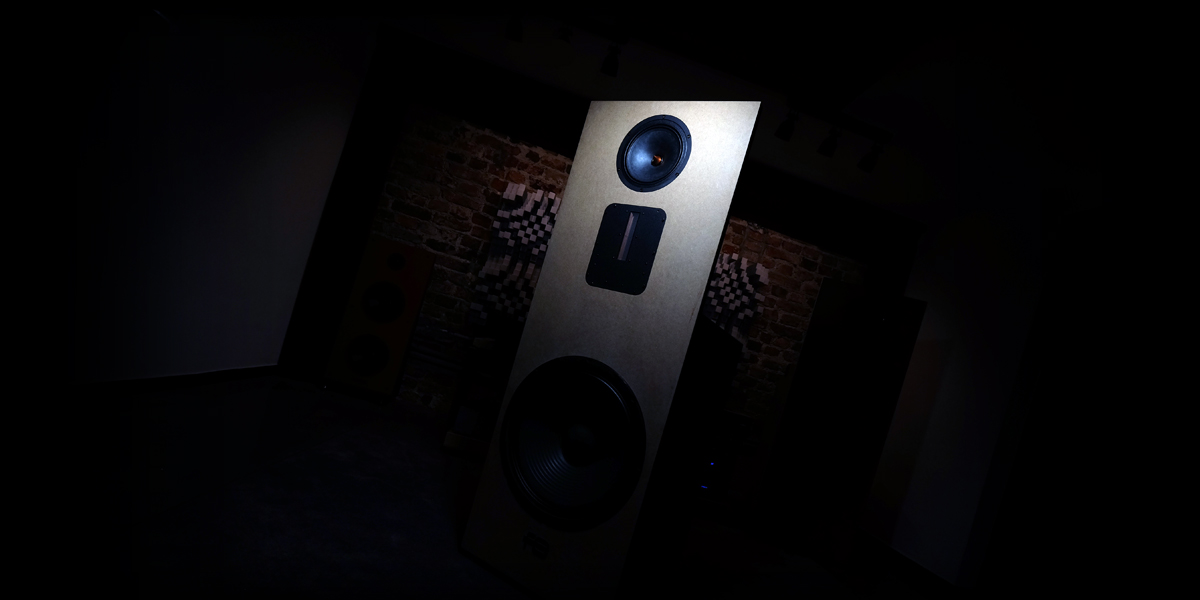LampizatOr manufacture is known for its fine DACs. These products placed Łukasz Fikus on the audio road map and rightfully so. He does things differently and that’s something people know and admire. Yet not many enthusiasts are aware that Mr Fikus started elsewhere, he’s the speakers guy deep inside since his very early audio days. Some time to make the floorstanders idea possible was needed and these shenanigans are now conducted under different and new brand. Fikus Electric P-17 speakers are this review’s main dish, enjoy!
Let’s take a look at current LampizatOr portfolio. There are five different DACs, each exceptionally customizable by today’s standards, literally tailor-made to one’s needs; Amber 2, Big 7, Atlantic, Golden Gate flagship and Golden Gate Atlantic if one isn’t into DHTs that much, yet would like to have a proper Polish TOTL source at home. Or, to make it even simpler to understand, both Big 7 and Atlantic can be had in much costlier Golden Gate versions, whereas there’s no room for Amber 2 in this luxurious group. LampizatOr DAC offer starts at €1’800 and ends at ten times that – €18’000. Let’s skip possible upgrades in each and every case, one article to cover all options available wouldn’t be enough. Moving on, there are GM70 monos, 211 SET and balanced (push-pull) versions and Amber integrated amp. Several different preamplifier models sit on top of this already crowded offering, complemented by a digital SuperKomputer transport, which not that long ago was known as maxed-out Komputer. Heck, there’s even the Silk AC filtering box and a bunch of cables to have everything made by LampizatOr all across the board. Well, almost, speakers were the missing link, yet this isn’t the case anymore.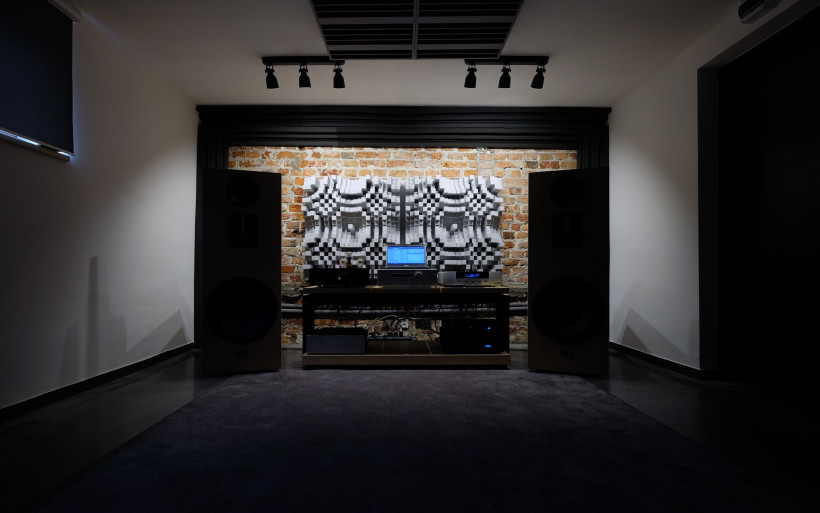 I tend to think that Łukasz Fikus likes what Nelson Pass does. He obviously has to fancy his approach. There’s the official Pass Labs company and the other is world-famous Nelson’s kitchen table – FirstWatt. Łukasz wants to do the very same thing, namely still run LampizatOr in order to be fiscally viable as this is his well-established business. Yet at the same time his goal is to be fulfilled as an engineer, whose aim is to create unusual, sometimes very crazy and niche products, which don’t quite fit the LampizatOr portfolio. And this plan just got real via his latest brand – Fikus Electric. It’s really hard to say what kind of fruits we shall see lying under the FE tree in the future. Transistor affairs, even more twisted DACs than now, products of vintage roots yet executed in very modern fashion and things of this sort are to be expected. Presumably of very affordable and awfully expensive prices, which will be product dependent. Yet this is nothing short of merely journalistic guessing game at works, beyond this review’s scope. On the contrary to Fikus Electric P-17 speakers, these are already available. Come to think of it, to have this type of a product makes perfect sense, it’s in 100% complementary with LampizatOr amplifiers.
I tend to think that Łukasz Fikus likes what Nelson Pass does. He obviously has to fancy his approach. There’s the official Pass Labs company and the other is world-famous Nelson’s kitchen table – FirstWatt. Łukasz wants to do the very same thing, namely still run LampizatOr in order to be fiscally viable as this is his well-established business. Yet at the same time his goal is to be fulfilled as an engineer, whose aim is to create unusual, sometimes very crazy and niche products, which don’t quite fit the LampizatOr portfolio. And this plan just got real via his latest brand – Fikus Electric. It’s really hard to say what kind of fruits we shall see lying under the FE tree in the future. Transistor affairs, even more twisted DACs than now, products of vintage roots yet executed in very modern fashion and things of this sort are to be expected. Presumably of very affordable and awfully expensive prices, which will be product dependent. Yet this is nothing short of merely journalistic guessing game at works, beyond this review’s scope. On the contrary to Fikus Electric P-17 speakers, these are already available. Come to think of it, to have this type of a product makes perfect sense, it’s in 100% complementary with LampizatOr amplifiers.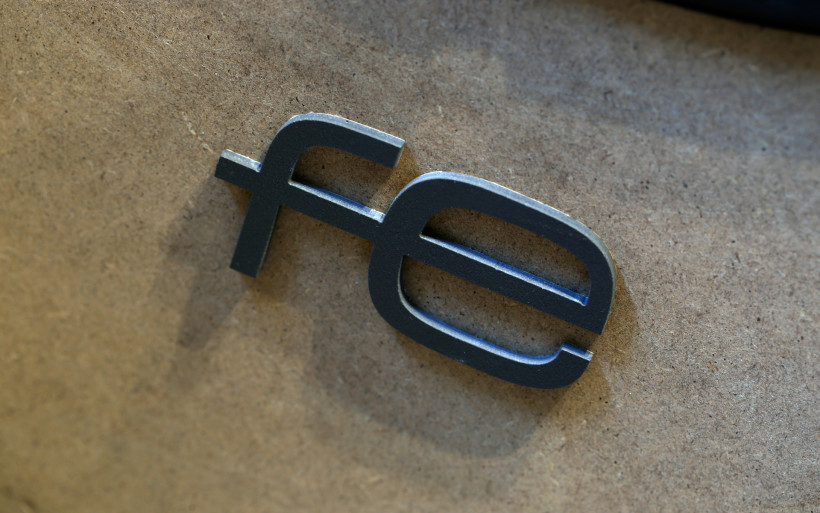 Łukasz Fikus started his adventure with audio many years ago. CD players tinkering was his thing. Giving them new and – as he puts it – improved life was the foundation of his knowledge. That was the starting point for machines LampizatOr is the most known today – DACs. But about a decade earlier he got himself into speakers DIY. Mr Fikus never cared about looks of his products, back then it was all about the sound. And in order to achieve his subjective and personal nirvana, the OB topology became his thing. Open baffles deliver sound very direct, big, powerful and uncolored. If one pays attention to drivers and crossovers, even gravity and smoothness can be squeezed into the outcome and P-17 is something along those lines. The name itself stands for ‘Project 17’, which implies that there were 16 others before.
Łukasz Fikus started his adventure with audio many years ago. CD players tinkering was his thing. Giving them new and – as he puts it – improved life was the foundation of his knowledge. That was the starting point for machines LampizatOr is the most known today – DACs. But about a decade earlier he got himself into speakers DIY. Mr Fikus never cared about looks of his products, back then it was all about the sound. And in order to achieve his subjective and personal nirvana, the OB topology became his thing. Open baffles deliver sound very direct, big, powerful and uncolored. If one pays attention to drivers and crossovers, even gravity and smoothness can be squeezed into the outcome and P-17 is something along those lines. The name itself stands for ‘Project 17’, which implies that there were 16 others before.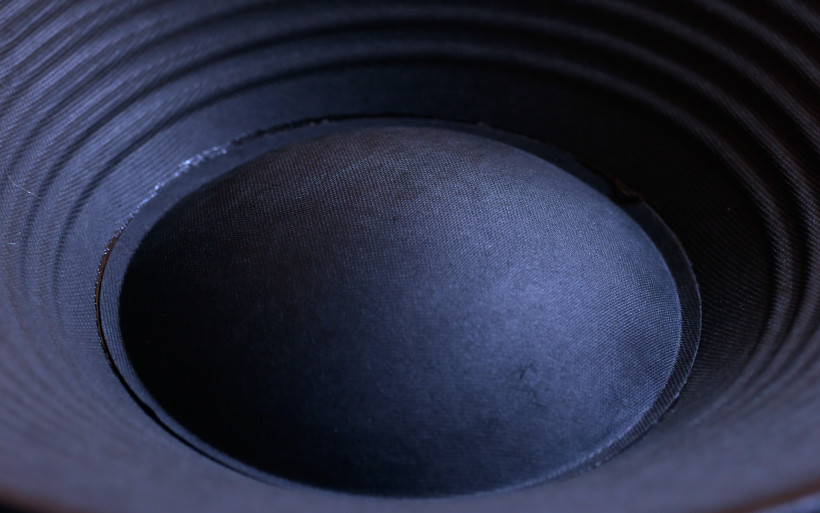 Long story’s short, everything from P-1 to P-16 had nothing in common with open baffles. All predecessors of this review’s hero were more classical, bass-reflex vented floorstanders. The P-17 design severely changed mindset of its constructor as from this point onward he became huge OB aficionado. Łukasz wanted this old concept to become commercially available for years. His sweet seventeen was the missing link in the chain he cast thus far. It compliments the glass-heavy LampizatOr portfolio, but that’s one thing. The other is that – according to the man himself – this personal project of his is also about showing people how great an affordable speaker can sound. Still, Łukasz likes to do things differently and his latest floorstanders boast with such attitude very clearly, they are very peculiar. And lastly, if one wonders why P-17 is available in Fikus Electric offering and not any other model Łukasz DIY-ed later on, the answer is very simple. This design in particular became the most recognizable out of all of his speakers. This is the one that got him famous.
Long story’s short, everything from P-1 to P-16 had nothing in common with open baffles. All predecessors of this review’s hero were more classical, bass-reflex vented floorstanders. The P-17 design severely changed mindset of its constructor as from this point onward he became huge OB aficionado. Łukasz wanted this old concept to become commercially available for years. His sweet seventeen was the missing link in the chain he cast thus far. It compliments the glass-heavy LampizatOr portfolio, but that’s one thing. The other is that – according to the man himself – this personal project of his is also about showing people how great an affordable speaker can sound. Still, Łukasz likes to do things differently and his latest floorstanders boast with such attitude very clearly, they are very peculiar. And lastly, if one wonders why P-17 is available in Fikus Electric offering and not any other model Łukasz DIY-ed later on, the answer is very simple. This design in particular became the most recognizable out of all of his speakers. This is the one that got him famous.
Build
Please take a good long look at P-17. This is no ordinary product, it’s very DIY alike. Even ‘a bit’ too much if one pays attention to visuals. What was delivered to yours truly looked like something done in a very austere and no-frills fashion, yet intentionally. First of all, Łukasz wanted the basic P-17 version to be as affordable as possible. This product and presumably all upcoming Fikus Electric goods are based on the factory direct business model, which removes distributors’ and dealers’ cuts out of equation. The vanilla P-17 has no finish whatsoever, plain and very thick MDF without exotic veneers or any kind of paint job is what’s on the table, which of course leads to cost reduction as well. Still, if one is into something flashier, that’s doable yet the final tab goes up. Black and white finishes are available (+€500), so are oaken veneers in three versions; dark smoked, black and white (+€1’500). All of that is satin alike, but presumably gloss will appear as well. The crossover based on costlier (+€500) and better parts can be ordered as well, picture Duelunds and the lot. Maxed-out P-17 is for the taking for €7’000/pr, whereas the basic model runs for €5’000/pr. In any case… upgrades, upgrades, upgrades. That’s what Mr Fikus is all about since the very beginning of his commercial ride and it’s highly unlikely that this status quo will ever change. Fikus Electric P-17 is big, intimidating even. Each speaker measures (W x D x H) 55 x 60 x 140 cm and weighs ‘mere’ 50 kilograms. Its FR is 35 – 30 000 Hz, nominal impedance is 8 ohms and sensitivity of 95 dB / 1m / 1W seals the deal. The P-17 is a three-way breed which is nothing uncommon all by itself really. But the fact that this product is of dipole sort all the way surely is. 18” bass woofer of 99 dB sensitivity is made by ATS and comes from the pro market. Its paper membrane and cloth surrounding are two things Łukasz pays attention to. Said transducer is cut via 2nd order filter at 700 Hz. Next in line is Dayton’s midrange driver. It starts at 700 Hz (1st order) and goes all the way to 3500 Hz. Again, this is a celulose and accordeon alike cloth affair, made in Taiwan and powered with neodymium magnet. This driver was meant to work as a widebander. Its stock version sports a small tube, which LampizatOr crew gladly remove. And lastly, dipole ribbon transducer by RAAL, it starts to sing from 7000 Hz via 2nd order. Herr Fikus has always been crazy about this manufacture’s products and each tweeter used in his P-17 is sold for +/- €900. Remaining drivers are much more affordable and the man himself doesn’t hide it. Still, €1’800 spent on just two transducers in a €5’000 three-way makes its creator either very smart or very unwise. Łukasz proved already that he knows what’s what, hence there’s no question in my mind where he belongs.
Fikus Electric P-17 is big, intimidating even. Each speaker measures (W x D x H) 55 x 60 x 140 cm and weighs ‘mere’ 50 kilograms. Its FR is 35 – 30 000 Hz, nominal impedance is 8 ohms and sensitivity of 95 dB / 1m / 1W seals the deal. The P-17 is a three-way breed which is nothing uncommon all by itself really. But the fact that this product is of dipole sort all the way surely is. 18” bass woofer of 99 dB sensitivity is made by ATS and comes from the pro market. Its paper membrane and cloth surrounding are two things Łukasz pays attention to. Said transducer is cut via 2nd order filter at 700 Hz. Next in line is Dayton’s midrange driver. It starts at 700 Hz (1st order) and goes all the way to 3500 Hz. Again, this is a celulose and accordeon alike cloth affair, made in Taiwan and powered with neodymium magnet. This driver was meant to work as a widebander. Its stock version sports a small tube, which LampizatOr crew gladly remove. And lastly, dipole ribbon transducer by RAAL, it starts to sing from 7000 Hz via 2nd order. Herr Fikus has always been crazy about this manufacture’s products and each tweeter used in his P-17 is sold for +/- €900. Remaining drivers are much more affordable and the man himself doesn’t hide it. Still, €1’800 spent on just two transducers in a €5’000 three-way makes its creator either very smart or very unwise. Łukasz proved already that he knows what’s what, hence there’s no question in my mind where he belongs.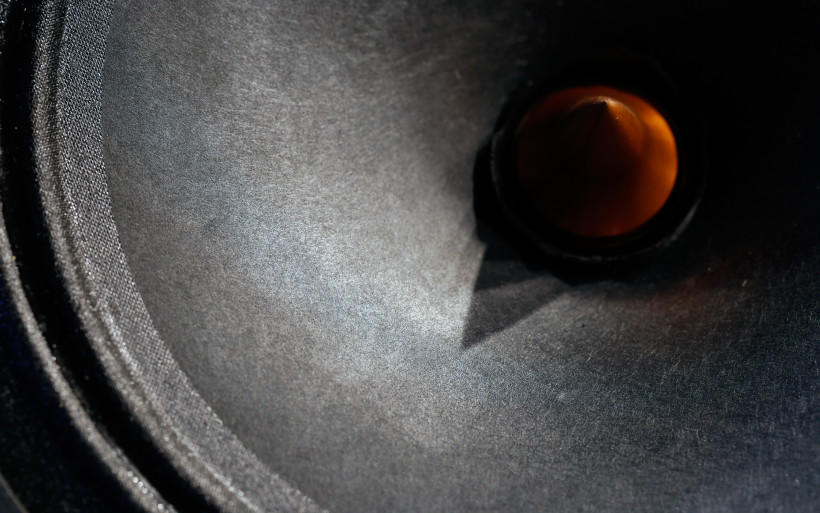 Fikus Electric P-17 is almost an open baffle type of a product. Yet in its case the word ‘almost’ makes helluva difference. Łukasz had a very simple idea. He wanted to mate all OB virtues with high efficiency, just in order to use small valve amplifiers. The P-17 is the outcome with a necessary box twist. Let’s talk about the box itself. It’s there, it’s big and it’s unavoidable, but the most important thing is that it doesn’t sport rear wall. Not only this coffin makes the product very clunky, but also without it there’s no bass. Łukasz said that the longer said contraption is, the lower the woofers’ downstairs reach. And let me be perfectly clear: P-17 is not overbearing in this regard at all. In other words, it’s for the best to like the box, embrace it even, try to not pay any attention to it or simply move along in search for visually more generous speakers if one can’t stand it. But it’s here to stay. Our Polish engineer put the sound on the pedestal and apparently ‘only’ that. He explained that for P-17’s asking not much could be done in terms of carpentry. Łukasz is neither a carpenter nor he doesn’t know one capable of doing much better job for pennies that left after covering every other P-17 related expense. Hence the very first Fikus Electric product will be one ugly SOB to many people and rightfully so. Yours truly strongly believes that our Polish constructor couldn’t care less about that.
Fikus Electric P-17 is almost an open baffle type of a product. Yet in its case the word ‘almost’ makes helluva difference. Łukasz had a very simple idea. He wanted to mate all OB virtues with high efficiency, just in order to use small valve amplifiers. The P-17 is the outcome with a necessary box twist. Let’s talk about the box itself. It’s there, it’s big and it’s unavoidable, but the most important thing is that it doesn’t sport rear wall. Not only this coffin makes the product very clunky, but also without it there’s no bass. Łukasz said that the longer said contraption is, the lower the woofers’ downstairs reach. And let me be perfectly clear: P-17 is not overbearing in this regard at all. In other words, it’s for the best to like the box, embrace it even, try to not pay any attention to it or simply move along in search for visually more generous speakers if one can’t stand it. But it’s here to stay. Our Polish engineer put the sound on the pedestal and apparently ‘only’ that. He explained that for P-17’s asking not much could be done in terms of carpentry. Łukasz is neither a carpenter nor he doesn’t know one capable of doing much better job for pennies that left after covering every other P-17 related expense. Hence the very first Fikus Electric product will be one ugly SOB to many people and rightfully so. Yours truly strongly believes that our Polish constructor couldn’t care less about that.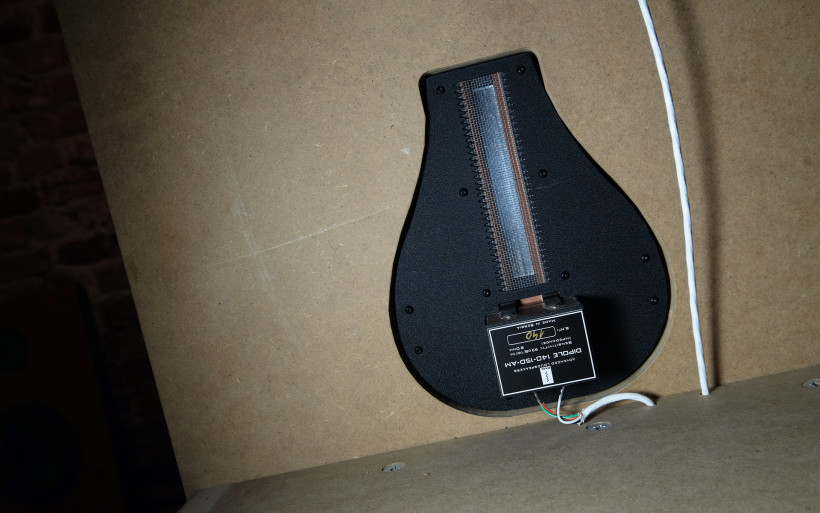 Fikus Electric P-17 is very solid and massive. The finish is rough, some joints are visible, but the outcome feels very honest. The product doesn’t sport any measures which would make it less DIY alike, it’s free from any fancy carpentry anywhere. Heck, even slight roundings aren’t there. If there’s vanilla flavor in audio, the P-17 case shows how it tastes like. It’s quite obvious that baffles and boxes are here not to please one’s eyes but fulfill their acoustic purpose. Each box is dampened with lots of bituminous mat and additional foams can be easily placed as well. The manufacturer supports these too and suggests to experiment with them as the outcome will vary from one room to another. P-17 arrived without spikes but wheels instead, which made this journalist’s life this much easier. Double binding posts on the product’s back allow one to handle bass driver separately from the rest.
Fikus Electric P-17 is very solid and massive. The finish is rough, some joints are visible, but the outcome feels very honest. The product doesn’t sport any measures which would make it less DIY alike, it’s free from any fancy carpentry anywhere. Heck, even slight roundings aren’t there. If there’s vanilla flavor in audio, the P-17 case shows how it tastes like. It’s quite obvious that baffles and boxes are here not to please one’s eyes but fulfill their acoustic purpose. Each box is dampened with lots of bituminous mat and additional foams can be easily placed as well. The manufacturer supports these too and suggests to experiment with them as the outcome will vary from one room to another. P-17 arrived without spikes but wheels instead, which made this journalist’s life this much easier. Double binding posts on the product’s back allow one to handle bass driver separately from the rest.
Sound
As per usual, the obvious source pick was LampizatOr Golden Gate (Psvane WE101D-L + KR Audio 5U4G Ltd. + TAIV VC-03 attenuation) and AMR DP-777SE was used later on. Asus UX305LA served as a transport. My main amplifier was FirstWatt F7, it seemed to be the safest bet. But at some point Trilogy 925 was used as well. Here’s the story. It might be redundant, yet again typical open baffle sound has to be invoked. Fikus Electric P-17 is in that vein after all. The drill is as per usual, namely directness, scale, effortlessness, lack of colorations and things of that sort. The only question is this: what’s the price to pay? As there has to be one? Density perhaps? Lack of muscular tissue? Gravity not from Earth but Moon instead? In many regards P-17 acts as a typical OB affair indeed. It bears all of this design’s virtues, yet is very surprising in several ways.
It might be redundant, yet again typical open baffle sound has to be invoked. Fikus Electric P-17 is in that vein after all. The drill is as per usual, namely directness, scale, effortlessness, lack of colorations and things of that sort. The only question is this: what’s the price to pay? As there has to be one? Density perhaps? Lack of muscular tissue? Gravity not from Earth but Moon instead? In many regards P-17 acts as a typical OB affair indeed. It bears all of this design’s virtues, yet is very surprising in several ways.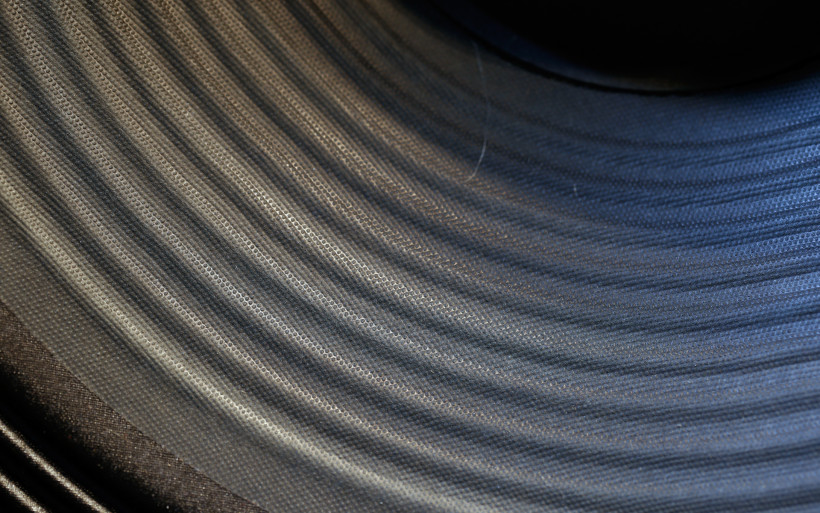 They say that big drivers make big sound and rightfully so. The obvious question is how big it really is in case of a 18” driver loaded with paper membrane and stiff cloth surrounding, namely how deep it reaches, how feisty is in general and whether it has some issues with saturation and texturing. First of all, P-17 downstairs department has strictly additive value, it’s not overbearing in the sense of its sheer amount. It goes rather without saying that – once both speakers find their happy place in a room – there’s no boominess, which is dandy. Once one gets used to this, it’s really hard to look back. There’s a lot of energy at the very bottom and what’s a bit above isn’t elevated at all. These are the reasons why P-17 bass is exceptionally agile and has proper shove. Again, loads of energy are emitted towards listener and this is subjectively very enjoyable and likeable. Membranes are pushed with such ease that even the most difficult and complex bass shifts happen in an instant. To witness dynamic contrasts this clearly is nothing short but spectacular.
They say that big drivers make big sound and rightfully so. The obvious question is how big it really is in case of a 18” driver loaded with paper membrane and stiff cloth surrounding, namely how deep it reaches, how feisty is in general and whether it has some issues with saturation and texturing. First of all, P-17 downstairs department has strictly additive value, it’s not overbearing in the sense of its sheer amount. It goes rather without saying that – once both speakers find their happy place in a room – there’s no boominess, which is dandy. Once one gets used to this, it’s really hard to look back. There’s a lot of energy at the very bottom and what’s a bit above isn’t elevated at all. These are the reasons why P-17 bass is exceptionally agile and has proper shove. Again, loads of energy are emitted towards listener and this is subjectively very enjoyable and likeable. Membranes are pushed with such ease that even the most difficult and complex bass shifts happen in an instant. To witness dynamic contrasts this clearly is nothing short but spectacular.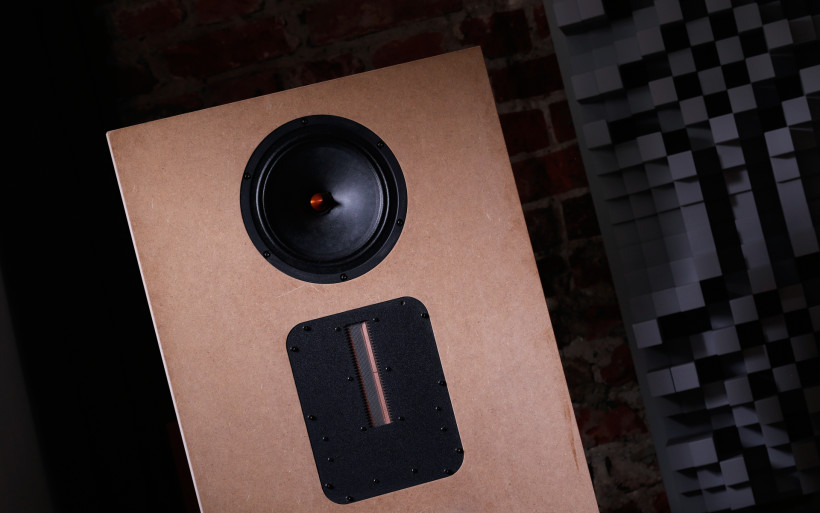 My usual bass routine revolved around tribal, folk, ethnic and soundtrack music by Wardruna, Smadj, Alan Silvestri and the lot. Each and every time, P-17 showed proper attitude downstairs with no questions asked. Its bas behaves like a proverbial cameleon; it can be exceptionally agile, punchy and contour, yet when a situation demands it, slower, thicker and fuzzier attitude is shown as well. Still, a scenario where it went in too watery direction not even once it happened at my place. On the contrary, some of mellower bass heavy music was shown in more fit fashion than usual and i.e. with my reference semi-transmission line Boenicke W8. That’s hardly any surprise, P-17 always sounds very effortless and direct and having said that, W8 has smaller downstairs in comparison. Fast and texturally complex, but smaller nonetheless. It’s the P-17 who sports much grander slam in this regard. But right from the get-go, the former feels more substantial, denser if you will. The latter product is audibly feistier and bigger, yet also far less round with random electronics, namely Sanders 2-piece combo. That’s a no go, an overkill for P-17 undoubtedly. Still, FirstWatt F7 was able to fix stiffness and skimpy texturing, it injected needed fat under already agile tissue, which led to very satisfying outcome. With 300B driven SET amplifiers this aspect would’ve been elevated even more I think .
My usual bass routine revolved around tribal, folk, ethnic and soundtrack music by Wardruna, Smadj, Alan Silvestri and the lot. Each and every time, P-17 showed proper attitude downstairs with no questions asked. Its bas behaves like a proverbial cameleon; it can be exceptionally agile, punchy and contour, yet when a situation demands it, slower, thicker and fuzzier attitude is shown as well. Still, a scenario where it went in too watery direction not even once it happened at my place. On the contrary, some of mellower bass heavy music was shown in more fit fashion than usual and i.e. with my reference semi-transmission line Boenicke W8. That’s hardly any surprise, P-17 always sounds very effortless and direct and having said that, W8 has smaller downstairs in comparison. Fast and texturally complex, but smaller nonetheless. It’s the P-17 who sports much grander slam in this regard. But right from the get-go, the former feels more substantial, denser if you will. The latter product is audibly feistier and bigger, yet also far less round with random electronics, namely Sanders 2-piece combo. That’s a no go, an overkill for P-17 undoubtedly. Still, FirstWatt F7 was able to fix stiffness and skimpy texturing, it injected needed fat under already agile tissue, which led to very satisfying outcome. With 300B driven SET amplifiers this aspect would’ve been elevated even more I think .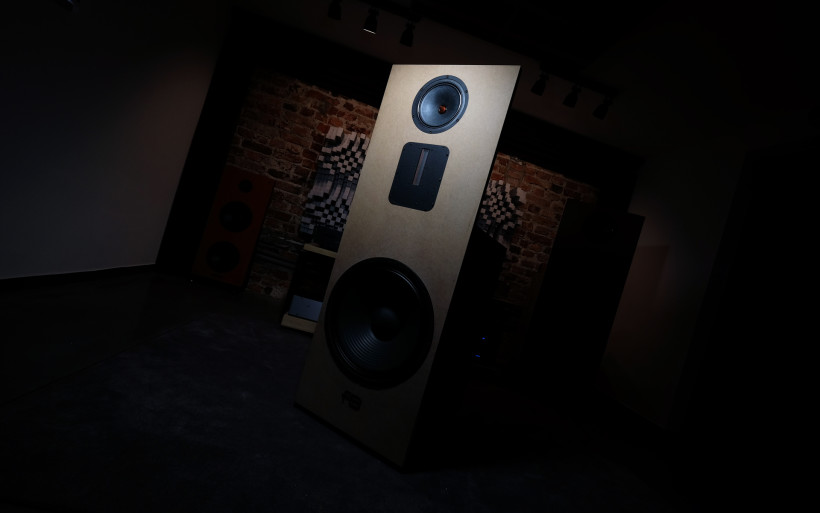 So in case of P-17, denser company is highly appreciated. This product will sing with everything, but there’s a substantial difference between aforementioned Sanders Sound Systems Magtech amp + preamplifier and products of FirstWatt F7 kind. Trilogy 925 should be somewhere in between, yet it wasn’t. It toned P-17 down a little and made the outcome even heavier than with Nelson’s F7. Even though the bass slowed down slightly, the sensation of even greater authority was the obvious upshot. FirstWatt’s amp is already a champ in this regard as it acts like much more powerful brick than it really is. But with P-17, the English integrated went to even weightier and more substantial length. To hear bass slam this powerful, well-controlled, thick and saturated was an incredible experience. It’s a rare thing to hear Colin Stetson’s bass saxophone (“To See More Light”) massive to such a degree. Not many speakers I know are able to pull this off so brilliantly.
So in case of P-17, denser company is highly appreciated. This product will sing with everything, but there’s a substantial difference between aforementioned Sanders Sound Systems Magtech amp + preamplifier and products of FirstWatt F7 kind. Trilogy 925 should be somewhere in between, yet it wasn’t. It toned P-17 down a little and made the outcome even heavier than with Nelson’s F7. Even though the bass slowed down slightly, the sensation of even greater authority was the obvious upshot. FirstWatt’s amp is already a champ in this regard as it acts like much more powerful brick than it really is. But with P-17, the English integrated went to even weightier and more substantial length. To hear bass slam this powerful, well-controlled, thick and saturated was an incredible experience. It’s a rare thing to hear Colin Stetson’s bass saxophone (“To See More Light”) massive to such a degree. Not many speakers I know are able to pull this off so brilliantly.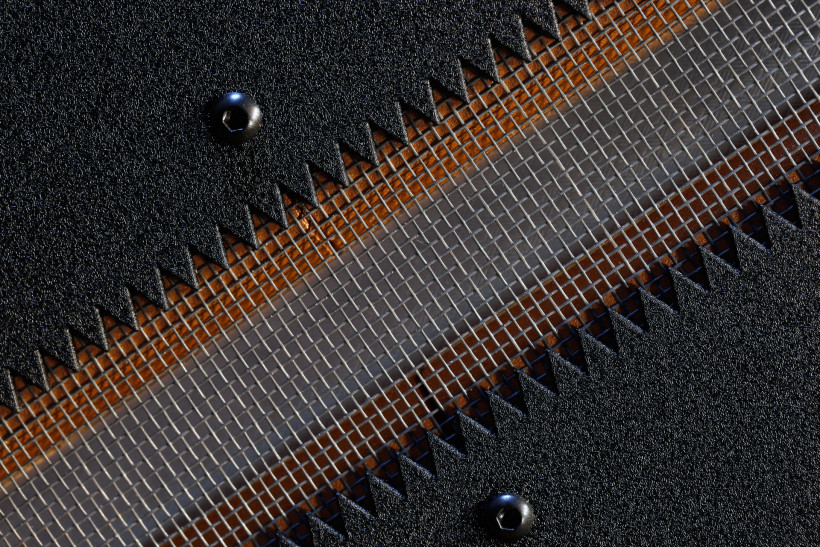 Bass wasn’t artificial at all and no matter the scenario, yet it was heard that thicker companions elevate the experience. The rest of audible FR is very civilized right from the start, excessive stiffness or dullness aren’t the case here at all. My point is that paper membrane based Dayton widebander trimmed to handle midrange only was subjectively a spot-on no matter the electronics used. P-17 serves vocals in a very vivid, yet clear way. These will sound withdrawn only when a recording is done in such fashion. There’s a substantial difference in voicing on Fiona Apple’s “Container’, Lorde’s “Royals”, Wardruna’s “Kauna” and AC/DC’s “Who Made Who”. But the gist is that P-17 easily shows what’s what in each of these in terms of clarity, colour and on-stage placement. There’s not a shadow of doubt in my mind that Mr Fikus wanted his first commercial speakers to be as informative as it gets and that’s done, case closed. Vividness we can consider as yet another great attractor. Blixa Bargeld sounded very convincing (calmly, clearly) on “Sabrina” but to leave it just like that would be an understatement. He sang like he was there in my listening room and great bass line completed the picture. This was the one man event exclusively and I had the golden ticket.
Bass wasn’t artificial at all and no matter the scenario, yet it was heard that thicker companions elevate the experience. The rest of audible FR is very civilized right from the start, excessive stiffness or dullness aren’t the case here at all. My point is that paper membrane based Dayton widebander trimmed to handle midrange only was subjectively a spot-on no matter the electronics used. P-17 serves vocals in a very vivid, yet clear way. These will sound withdrawn only when a recording is done in such fashion. There’s a substantial difference in voicing on Fiona Apple’s “Container’, Lorde’s “Royals”, Wardruna’s “Kauna” and AC/DC’s “Who Made Who”. But the gist is that P-17 easily shows what’s what in each of these in terms of clarity, colour and on-stage placement. There’s not a shadow of doubt in my mind that Mr Fikus wanted his first commercial speakers to be as informative as it gets and that’s done, case closed. Vividness we can consider as yet another great attractor. Blixa Bargeld sounded very convincing (calmly, clearly) on “Sabrina” but to leave it just like that would be an understatement. He sang like he was there in my listening room and great bass line completed the picture. This was the one man event exclusively and I had the golden ticket. Now let’s address the RAAL case. In short, this ribbon tweeter is amazing indeed. First of all, it surely keeps up with the rest of drivers. Highs are very informative, have generous weight, decay and aren’t tinny at all. Their amount varies from one amplifier to another. Trilogy 925 makes them slightly less audible than FirstWatt F7, yet a bit more substantial. In any case, there’s a room to tweak them. But the gist is that it’s heard that their input each and every time is of quality. “Gambling House Massacre” From Zatoichi OST has top end finish very delicate, yet at the same time exceptionally present and coherent with the rest of audible FR and additional examples I could multiply. That’s the beauty of P-17 in general, this product sounds very coherent. This is partially due to lack of emphasis put on one specific FR part, I tend to think that Łukasz not only used right drivers for the job but also seamed them together nicely. The outcome is that one can simply flow with the music instead of focusing on one of its key parts. As far as the audible frequency range goes, there isn’t one piece of this pie that’s tastier than the rest, the whole thing is perfectly edible. Needless to say, to receive the complete FR package without any shortcomings is the goal.
Now let’s address the RAAL case. In short, this ribbon tweeter is amazing indeed. First of all, it surely keeps up with the rest of drivers. Highs are very informative, have generous weight, decay and aren’t tinny at all. Their amount varies from one amplifier to another. Trilogy 925 makes them slightly less audible than FirstWatt F7, yet a bit more substantial. In any case, there’s a room to tweak them. But the gist is that it’s heard that their input each and every time is of quality. “Gambling House Massacre” From Zatoichi OST has top end finish very delicate, yet at the same time exceptionally present and coherent with the rest of audible FR and additional examples I could multiply. That’s the beauty of P-17 in general, this product sounds very coherent. This is partially due to lack of emphasis put on one specific FR part, I tend to think that Łukasz not only used right drivers for the job but also seamed them together nicely. The outcome is that one can simply flow with the music instead of focusing on one of its key parts. As far as the audible frequency range goes, there isn’t one piece of this pie that’s tastier than the rest, the whole thing is perfectly edible. Needless to say, to receive the complete FR package without any shortcomings is the goal.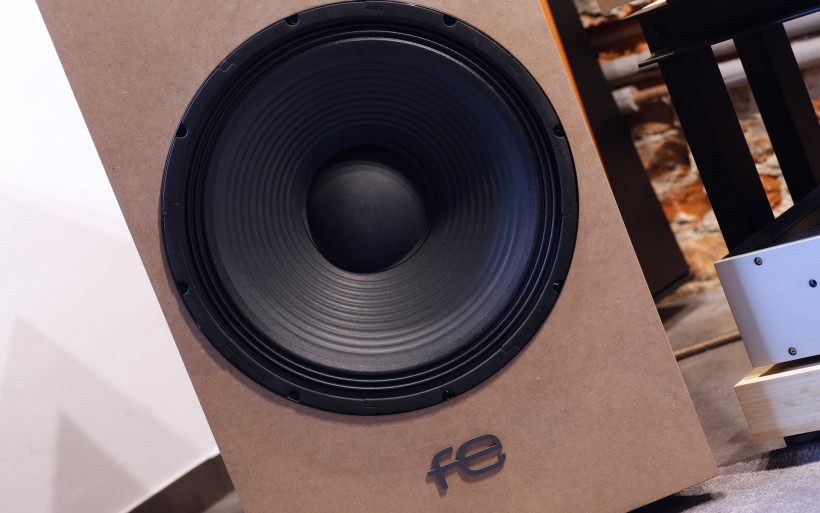 Fikus Electric P-17 excels at soundstaging too, yet this is not to be achieved right off the bat. The product itself is rather tall, with midrange driver placed at height way above one’s own head and this has some after-effects. P-17 drivers array is on purpose as RAAL ribbon transducer has to fire at a listener directly. It can’t be mounted neither too high nor too low. The outcome is that if – sitting closely to the speakers – the whole soundstage will be audibly elevated and a scenario where one’s head has to look up in order to ‘see’ a vocalist is certain. To make everything of proper size and alignment, the minimum reasonable listening distance between speakers and a listener is no less than three meters. In my room it forced me to move further for about one meter from a place I usually sit. And this new spot sucks bass. This is no P-17’s fault, my own four walls are the culprit. Still, it is what it is and because of what is, I never received the full P-17 experience, it was either slimmer bass or abnormal soundstage. That’s why rooms like mine, namely of 25 meters and not more, are considered as the minimum if they have proper acoustic job done.
Fikus Electric P-17 excels at soundstaging too, yet this is not to be achieved right off the bat. The product itself is rather tall, with midrange driver placed at height way above one’s own head and this has some after-effects. P-17 drivers array is on purpose as RAAL ribbon transducer has to fire at a listener directly. It can’t be mounted neither too high nor too low. The outcome is that if – sitting closely to the speakers – the whole soundstage will be audibly elevated and a scenario where one’s head has to look up in order to ‘see’ a vocalist is certain. To make everything of proper size and alignment, the minimum reasonable listening distance between speakers and a listener is no less than three meters. In my room it forced me to move further for about one meter from a place I usually sit. And this new spot sucks bass. This is no P-17’s fault, my own four walls are the culprit. Still, it is what it is and because of what is, I never received the full P-17 experience, it was either slimmer bass or abnormal soundstage. That’s why rooms like mine, namely of 25 meters and not more, are considered as the minimum if they have proper acoustic job done.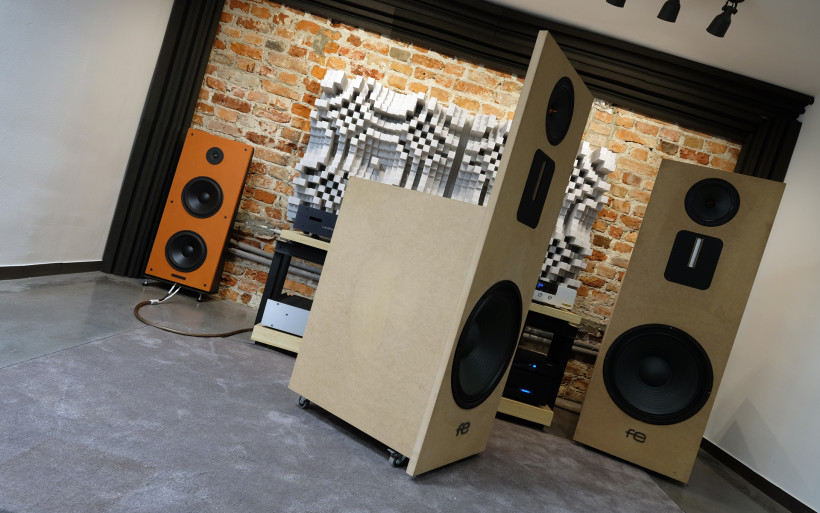 Fikus Electric P-17 sports grand soundstage in terms of its width, height and depth. It sings big, bold loud and proud. Some instruments are served in even grander fashion than usually. But the gist is that these are remarkably separated, with generous amount of air in-between. There’s this sensation of breath present, which makes the outcome very lively and effortless and that’s hard to pull off. OB designs excel in this, yet not every of this sort delivers it to such degree. Fikus Electric P-17 surely does and it also remarkably well shows layer after layer of what’s going on in front of a listener. On some recordings one can literally drown in the soundstage. What’s very audible is the difference between environment itself. Nick Cave’s Grinderman band song “No Pussy Blues” sports this studio alike vibe early on and that’s obviously there with P-17. The same story goes with Wardruna’s forest alike background or Michael Goddard’s “Zefiro Torna” cathedral piece, originally made by Monteverdi. The speakers weren’t able to completely disappear from my room as it’s too small. Still, I’m sure than in larger spaces this is not an issue at all for them. But in terms of sheer dimensions of what’s in front of a listener, the P-17 surpassed both PureAudioProject Trio10 Timeless and Gradient Revolution with ease and those are of OB sort as well.
Fikus Electric P-17 sports grand soundstage in terms of its width, height and depth. It sings big, bold loud and proud. Some instruments are served in even grander fashion than usually. But the gist is that these are remarkably separated, with generous amount of air in-between. There’s this sensation of breath present, which makes the outcome very lively and effortless and that’s hard to pull off. OB designs excel in this, yet not every of this sort delivers it to such degree. Fikus Electric P-17 surely does and it also remarkably well shows layer after layer of what’s going on in front of a listener. On some recordings one can literally drown in the soundstage. What’s very audible is the difference between environment itself. Nick Cave’s Grinderman band song “No Pussy Blues” sports this studio alike vibe early on and that’s obviously there with P-17. The same story goes with Wardruna’s forest alike background or Michael Goddard’s “Zefiro Torna” cathedral piece, originally made by Monteverdi. The speakers weren’t able to completely disappear from my room as it’s too small. Still, I’m sure than in larger spaces this is not an issue at all for them. But in terms of sheer dimensions of what’s in front of a listener, the P-17 surpassed both PureAudioProject Trio10 Timeless and Gradient Revolution with ease and those are of OB sort as well.
Summary
Fikus Electric P-17 is not for everyone, that’s as certain as death and taxes. It won’t please enthusiasts who’re after the complete package, that’s unquestionable. Polish speakers are all about performance and it’s obvious that these are targeted at certain very niche clientele. Łukasz Fikus is perfectly fine with that, he’s not about making everyone happy. The goal for him is to propagate his OB oriented vision among individuals already fully aware of what it really is and what it does. And if a bystander or two are hooked in the process, which is highly probable, even better.
P-17 speakers are huge, hence in order to not look overly intimidating, rather large space is needed. And the bigger a room is, the better outcome can be achieved. To witness the so-called ‘disappearing act’, I’d say about 35 meters and upwards are needed. Half of that space will do this trick only to some extent. And let’s not forget about the looks. Again, P-17 is for people who couldn’t care less about this aspect. This product will please audio enthusiasts who’re after top notch sound, yet literally only that.
Still, It’s highly likely that – once initial prejudice is off the table – Fikus Electric P-17 will blow you away with its sound. This is a remarkable performer for the coin, it really is. P-17 provides all virtues OBs are known for, yet sprinkles the sound with generous soundstage, upstairs poshness, loads of tangibility all across the board and it sings with low power amplifiers. Yet the most important thing is that P-17 is able to make one forget about the looks and completely focus on the music instead. This performer is not only plainly good, but able to punch way above its asking with ease. This very real deal in pricey audio times is a perfect reality check tool to have. Once all of P-17 virtues and €5’000 asking are taken into consideration, my sincere recommendation is the outcome. Necessary space requirement and willingness to turn the blind eye on P-17’s visuals were the only catches found. ‘Till next time.
Associated equipment:
- Sources: Lampizator Golden Gate (Psvane WE101D-L + KR Audio 5U4G Ltd. Ed.), AMR DP-777SE
- Preamplifier: Sanders Sound Systems preamplifier, Trilogy 925, FirstWatt F7
- Speakers: Boenicke Audio W8
- Transports: Asus UX305LA
- Interconnects: Forza AudioWorks Noir, Audiomica Laboratory Erys Excellence
- Power supply: Gigawatt PF-2 + Gigawatt LC-2 MK2 + Forza AudioWorks Noir Concept/Audiomica Laboratory Ness Excellence
- Rack: Franc Audio Accessories Wood Block Rack
- Music: NativeDSD
Retail prices of reviewed components in EU (incl. tax):
- Fikus Electric P-17: €5‘000
Manufacturer: Fikus Electric


